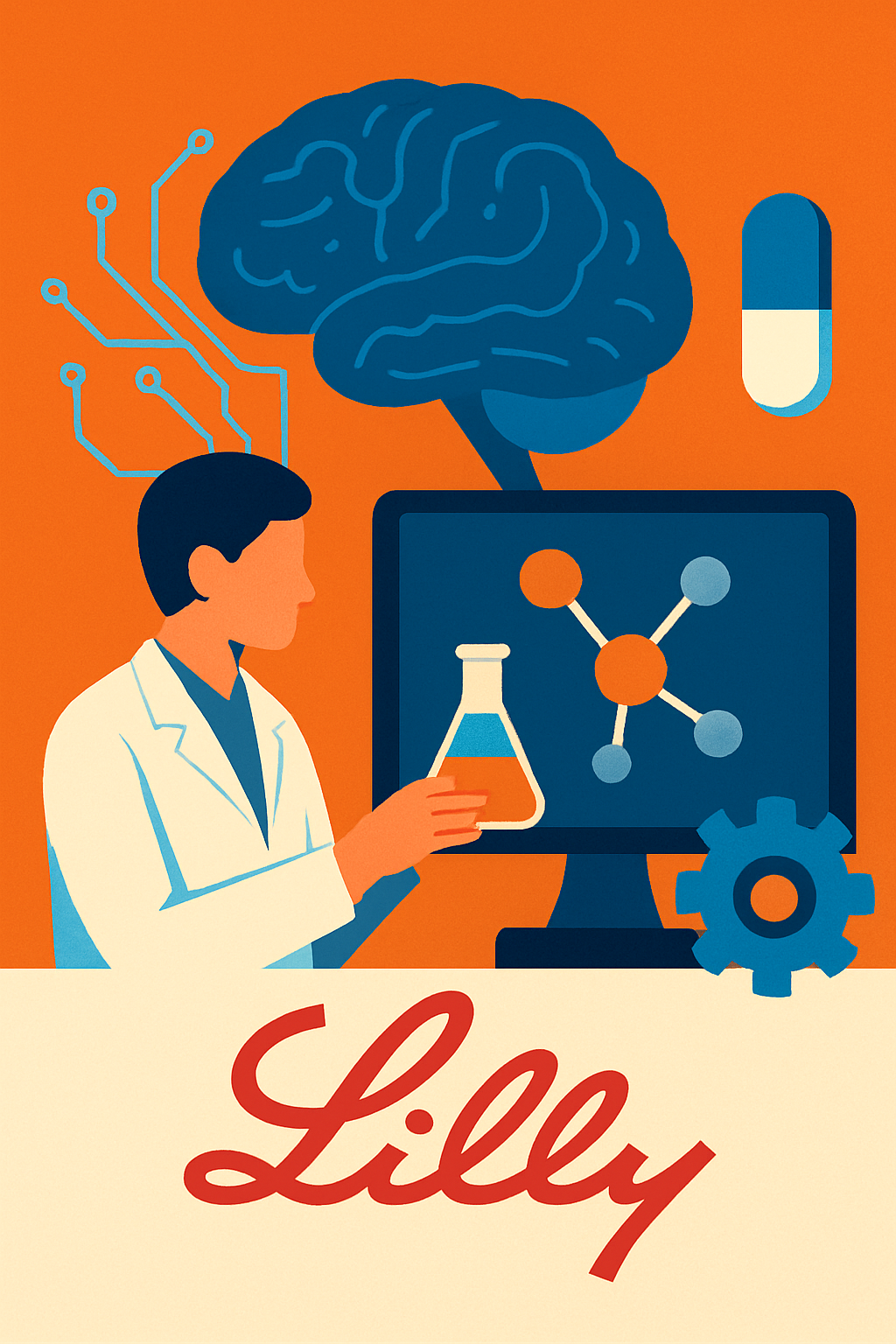Artificial intelligence continues to redefine entire industries, and healthcare is fast becoming its next frontier. On September 9, Eli Lilly (NYSE: LLY) announced the launch of an AI-powered drug discovery platform, giving biotech firms access to advanced machine learning models trained on decades of proprietary research data. The move represents a significant step in the convergence of big pharma and cutting-edge technology—a trend investors are increasingly watching closely.
Why This Matters for Investors
The biopharmaceutical sector has been under pressure to cut the time and cost of developing new drugs. Traditional drug discovery often spans over a decade and can require more than $2 billion in investment per approved drug, according to Deloitte’s 2024 Global Life Sciences Report. AI offers the promise of slashing both costs and timelines by simulating drug interactions, predicting molecule efficacy, and streamlining clinical trial design.
Eli Lilly’s platform positions the company not just as a pharmaceutical leader but also as a data-driven technology innovator. By opening access to external biotech firms, Lilly is creating a potential dual revenue stream: accelerating its own drug pipeline while monetizing licensing opportunities from smaller biotech partners.
For investors, this aligns with the broader market narrative: the companies that successfully integrate AI into their operations are attracting premium valuations. As noted by Bloomberg Intelligence, AI-driven healthcare solutions could represent a $70 billion market opportunity by 2030. Lilly’s move could allow it to capture a meaningful share of this emerging growth curve.
Industry Context and Competitive Edge
Lilly’s launch comes at a time when other pharmaceutical giants are also exploring AI partnerships. Pfizer has partnered with Insilico Medicine, and Novartis recently expanded its collaboration with Microsoft’s AI team. However, Lilly’s proprietary dataset—spanning years of internal research and clinical trial data—gives it a potential edge over peers relying primarily on third-party AI vendors.
According to Reuters, Lilly’s platform will enable biotech firms to run simulations that could shorten preclinical research by as much as 18 months. In a sector where speed often translates into billions in market opportunity, that time savings is critical. Moreover, Lilly’s decision to open its models to external use suggests the company is eyeing recurring revenue from licensing, much like how big tech firms monetize cloud services.
This diversification could be especially valuable as Lilly looks to offset rising R&D expenses and maintain momentum following the blockbuster success of its weight-loss and diabetes treatments.
Future Trends to Watch
AI’s integration into healthcare is not without risks. Regulatory frameworks for AI-enabled drug discovery are still evolving, and the U.S. Food and Drug Administration (FDA) has yet to finalize its stance on AI-designed therapeutics. Investors should watch for updates from both the FDA and Health Canada, as regulatory clarity could accelerate adoption—or introduce bottlenecks.
Additionally, partnerships with smaller biotech firms could create acquisition opportunities for Lilly. Companies that prove early success on the platform may become attractive takeover targets, further fueling Lilly’s growth pipeline. Analysts from McKinsey have also emphasized that companies at the intersection of biotech and AI are likely to command higher valuations due to their scalability and intellectual property assets.
Key Investment Insight
For investors, Eli Lilly’s AI platform represents both a defensive and offensive play. Defensively, it helps the company control rising R&D costs in an increasingly competitive drug market. Offensively, it opens up new revenue streams through licensing and potential collaborations. Long-term investors may view this as a reason to maintain or build exposure to Lilly, particularly given its track record of execution in commercializing high-value therapies.
Biotech firms leveraging Lilly’s platform also warrant attention. While many are smaller-cap and high-risk, those that successfully accelerate discovery using Lilly’s AI could see meaningful valuation uplifts.
Key Takeaways
Eli Lilly’s move into AI-driven drug discovery underscores a broader shift where pharma and tech are no longer separate silos but collaborative engines of innovation. As AI continues to permeate capital markets, the companies that strategically leverage it are likely to separate themselves from the pack.
Investors should monitor Lilly’s progress not just in terms of drug pipeline acceleration, but also in how effectively it monetizes this platform through external partnerships. For those seeking exposure to the convergence of healthcare and AI, Eli Lilly offers a compelling case as both an industry leader and early mover.
Stay tuned with MoneyNews.Today for daily insights on how emerging technologies are reshaping markets and creating new opportunities for investors.





